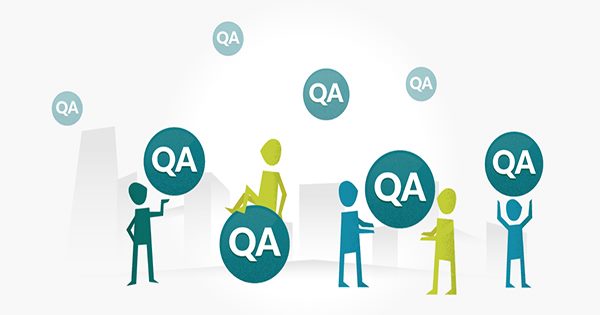
How to Make a Successful Career in Blockchain in Nepal
How to Make a Successful Career in Blockchain in Nepal
Blockchain is a shared, immutable database or ledger distributed among the nodes of a computer network. Blockchain, as a database, has a certain storage capacity to store information electronically in digital format. One of the main differences between ordinary databases and blockchains is the structure of the data.
The data structure of the database is best known for its crucial role in cryptocurrency systems that inherently makes an irreversible timeline of data when implemented in a decentralized nature. Every block gives an exact timestamp after being added to the chain, and the whole system guarantees fidelity and security without the help of a trusted third party.
Tangible assets like a house, land, car, cash, etc., or intangible assets like patents, trademarks, copyrights, intellectual properties, etc., can be tracked and traded virtually on Blockchain technology.
Importance of Blockchain Technology
There are numerous benefits of Blockchain technology; among them, some are shortlisted below:
Reduces costs
Blockchain reduces manual tasks (aggregating, amending data, reporting, auditing processes, etc.), so its nature helps cut costs for organizations. By broad observation, we conclude that it eliminates the middleman, vendors, and third-party providers, saving the amount.
Security
One of the major drawbacks of digital transformation is the insecurity of personal data and information. Governmental databases are always the first target of hackers, increasing with the hike of digital transformation as e-governance. We can find compassionate personal and governmental data of hundreds of thousands of people on the Dark Web encrypted online content not indexed on conventional search engines) leaked from different governmental databases. While Blockchain guarantees the system of “Decentralization”, if large copies of the Blockchain are stored in the wide distribution network of nodes, there won’t be any loophole that attackers can make a gateway to attack.
Multifunctional
Blockchain technology is not only applicable in the financial sector; rather, it is making the technology excellent for the future of our society. Blockchain has multiple application areas like it can be used in commerce and finance, healthcare, education, market, banking, government, and so on. These are the primary sectors that make society function.
Transparency
Blockchain is one of the most important technology as it consists of transparency. There are many types of blockchain providers; among them, public Blockchain is marked as one of the most transparent blockchain technology. One of the main reasons that make Blockchain technology transparent is that transaction happens through electronic medium.
How does Blockchain Technology Work?
You are now awaiting to know how Blockchain works. Blockchain technology works on digital module transaction systems, including various methods. Blockchain is also known as Distributed Ledger Technology (DLT) because it works by non allowing the deletion, altering and destruction of an immutable ledger or records and transactions. Blockchain is still not developed too much as expected, but shortly it will revolutionize many more, so let’s begin to demystify this technology:
Leading components of Blockchain Technology
Two leading components of Blockchain Technology make Blockchain technology run. The components are as below:
Cryptograph
Cryptography consists of two main keys, i.e., Public Keys and Private Keys, that help to perform successful transactions between two parties (Receiver and Sender). In the digital world, cryptography is known as the digital signature, which brings full security and non-access to a third party in the account of the transaction.
Peer-to-Peer Network
In this networking system, two or more computers are connected to share and transfer data and information. Peer-to-Peer networking systems allow sharing of files without having a separate server, which makes the non-involvement of third parties resulting in a secured transaction.
The involvement of earlier mentioned components gives the proper shape and smoothness to the process of blockchain technology. Cryptography creates the means of the transaction by providing Public and Private Keys; likewise, peer-to-peer networking systems play an important role in the communication between the two parties by working as the digital signature and providing restrictions on the involvement of the third-party during the transaction.
Types of Blockchain-Decide which one is better for you
There is four main blockchain technology as mentioned below:
Public Blockchain Technology
Public Blockchain Technology allows all the public people having internet access can become one of the nodes in the p2p networking system. Public and can easily read, write and audit the Blockchain. Some examples of Public Blockchain technology are Bitcoin, Litecoin and Ethereum etc.
Advantages
- Independence
- Transparency
- Trustworthy
Disadvantages
- Low performance
- Scalability
- Not enough secured
Use Cases
- Cryptocurrency
- Data and document Validation
Private Blockchain Technology
Private Blockchain Technology is non-decentralized and publicly accessible blockchain technology and needs special permission to access. From the security perspective, private blockchain technology is considered the most powerful secured technology. Unlike a Public blockchain, it has the center in charge (admin) that allows whom to allow the reading, writing, and auditing of the Blockchain. Some examples of this technology are Hyperledger Fabric, Hyperledger Sawtooth, Corda, and Multichain.
Advantages
- Access Control
- High performance
Disadvantages
- Non-Trustable
- Auditability
Use Cases
- Supply-chain
- Asset Ownership
Hybrid Blockchain Technology
Hybrid Blockchain Technology combines Public and Private Blockchain Technology as it is used for scalability and decentralization. Businesses and organizations can keep the transparency of their Blockchain by making some of them publicly accessible. Some sensitive blockchains can be kept private and allow access only to their BODs (Board of Directors). One example of Hybrid Blockchain Technology is Dragonchain.
Advantages
- Access Control
- High Performance
- Scalability
Disadvantages
- Low Transparency
- Upgrading
Use Cases
- Medical Reports
- Real Estate
Consortium Blockchain Technology
Consortium Blockchain Technology is a semi-decentralized type of Blockchain managed and handled by two or more organizations. It is governed by more than 2 entities rather than a single person. Some examples of Consortium Blockchain Technology are Quorum, Hyperledger and Corda.
Advantages
- Access control
- Scalability
- Security
Disadvantages
- Transparency
Use Cases
- Banking
- Research
- Supply Chain
What Does a Blockchain Developer Do?
There are two types of Blockchain Developers they are:
Core Blockchain Developer
Core Blockchain Developer is responsible for designing the architecture and security aspect of the proposed Blockchain technology. The core Blockchain developers make the basic foundations of the Blockchain and leave the rest to build and design by the Blockchain software developers.
Blockchain Software Developer
The Blockchain Software Developer is responsible for building Decentralized apps (dapps) and web varieties to make the blockchain system. Blockchain Software Developers follow the foundation built by the Core Blockchain Developer and make the daaps and web varieties ready to launch the blockchain technology to the platform.
Top Benefits of Blockchain Certification in Your Career
We frequently heard that many industries and firm uses Blockchain technology, but we seldom heard about the benefits of blockchain certification. There is a lot of ease of the certification in our entire career, and without any ado, let’s explore the benefits:
Huge Salary Range
Blockchain has been termed as the most demanded job of this 21st century by the IT job market. The emergence of new technologies like “Cloud Technology” and the “Internet of Things” has demanded that Blockchain developers switch the technology to the cloud. It results in very high demand for blockchain developers. Still, the reality in the job market is that professionals are not enough, so the imbalance between demand and supply makes the salary of blockchain developers drastically high. As per the Blockchain Council, the Blockchain developer earns a minimum of $75,00 to a maximum of $240,00 per annum, differing from the designation.
Exposure to Latest Tech
In other IT fields, professionals have limited resources to work, whereas, in Blockchain, the professionals are given enough resources to crawl and exposure to the latest tech. This is because blockchain technology is sensitive and needs to be secured. A professional working for Blockchain has to update (own) day-by-day to the latest tech as it is the practice since the Blockchain is initiated.
Lead Roles
The certification of Blockchain makes you a leader because the technology is new to the world, and the certified Blockchain developer needs to guide the other lower designated professionals to maintain the flow of a digital transaction. At the time of certification, the blockchain developers or professionals are taught to handle all the aspects related to the Blockchain in their field.
Best Blockchain Course to learn in Nepal
Learning is the first part of initiating a career in any field. Quality and practical education can be very important for every student to become a bolt in their field. Blockchain is emerging in Nepal, so taking a blockchain certification training program will be worthy and have great scope in Nepal. Per the Salary Explorer, the average salary of a Blockchain Developer in Nepal is NPR 75,000 per month.
Are you interested in the field of Blockchain? Do you want to make your career blot in the fastest-growing field? If your answer is yes, you can enroll in the practical-based Blockchain course at Tech Axis. We are keen to provide quality education in the IT field. You can browse us to check the full course details.











